Garden Box Plans – the SIDES
The sides are made from a 2×4. Like the base, they are cut to length on the miter saw. Then ripped down to width on the table saw.
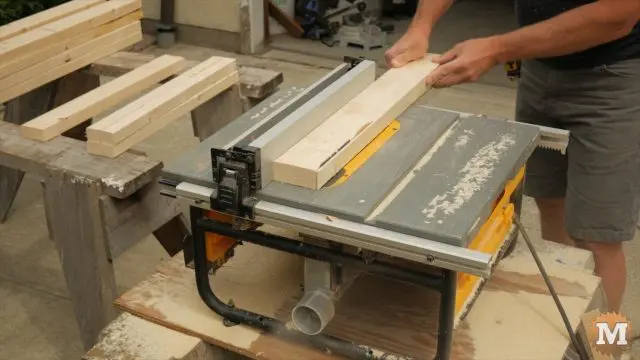
The sides are laid out and the hole for the dowels drilled. I use a small bench top drill press but you could carefully freehand this or use a drill guide. You want the pipe holder pegs to be at right angles (or 90 degrees) to the sides.
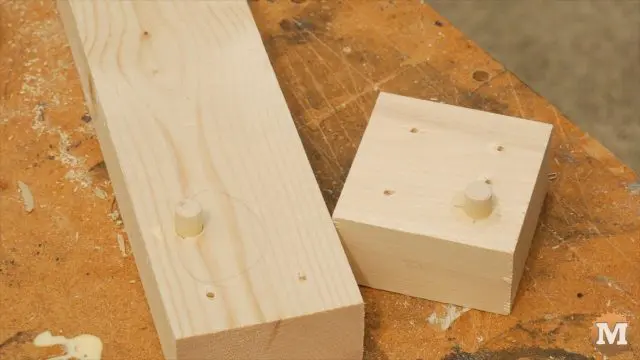
I like to drill pilot holes for the assembly screws at this time. I find it makes assembly easier.
the ENDS
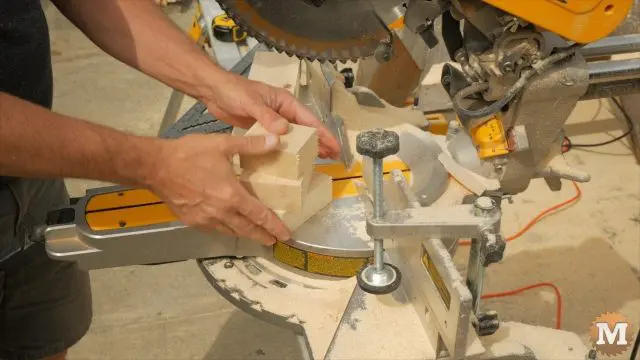
To make the ends, I use a length of 2×4 (that’s already ripped to width) for the three pieces that make up the end assembly. These are cut on the mitre saw.
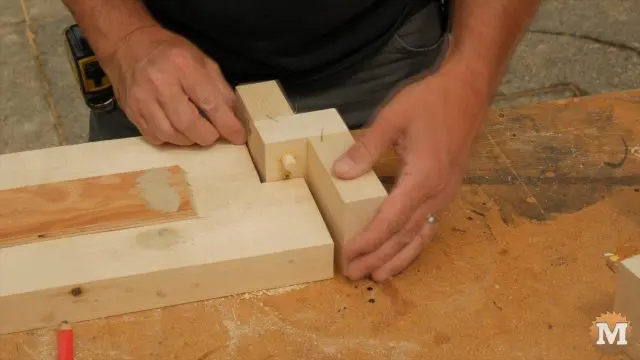
One of these blocks I take to the drill press for the dowel hole. I’ll then drill the pilot holes for assembly with an eighth bit. Dowels are cut to length and glued and tapped into the holes. I assemble the ends with glue and screws checking that everything lines up well and is square.
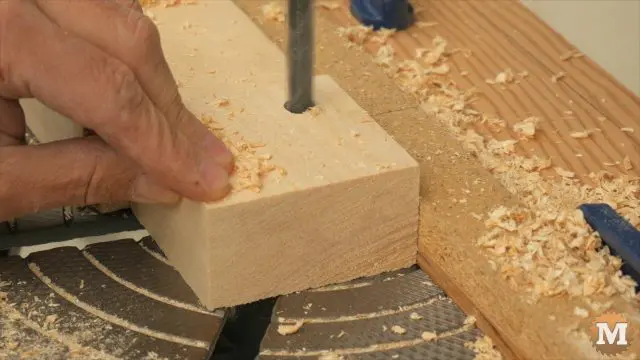
The ends can also be made with two pieces instead of three if you’re okay drilling the dowel hole into end grain. Either method works.
TEST FIT the garden box form
With all the parts of the form ready, I assemble it and test the fit. I use self drilling cabinet screws for this.
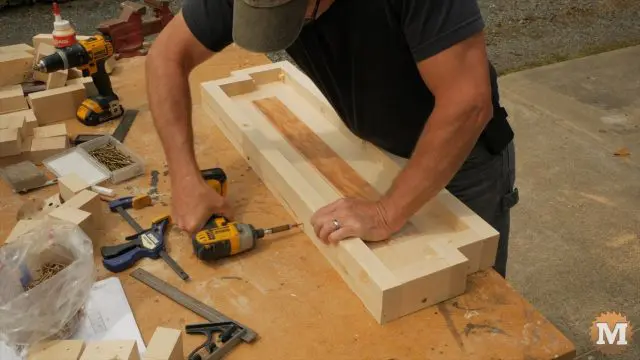
I number each form and all the parts so I can reassemble it again the same way.
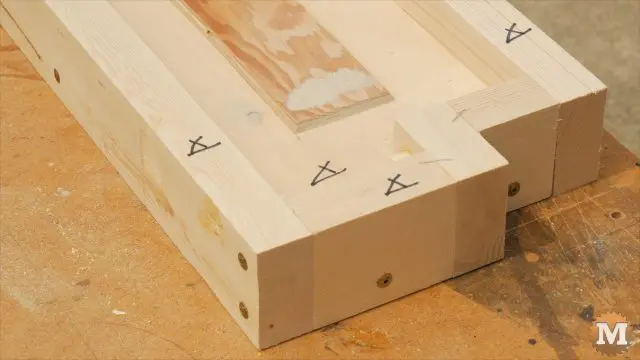
apply MINERAL OIL
I remove the screws and disassemble the form and apply two coats of Food Grade Mineral Oil. This oil is sold as Butcher’s Block or Cutting Board Oil. You can also buy it in Feed Stores for about half the price. I liberally apply it with a cloth. It doesn’t take long and each coat took about 10 minutes per form.
(Disclaimer: As an Amazon Associate I earn from qualifying purchases. Thank you for helping to support my content this way. )
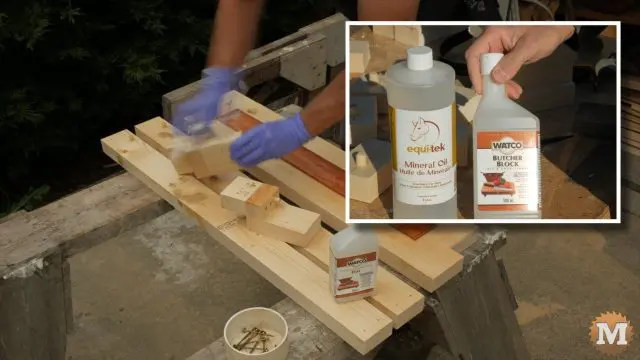
FINAL ASSEMBLY
While this is drying (or soaking in) I’ll cut the plastic pipe to length. And I cut a section of galvanized wire fence to reinforce the center section of the panel. This will be laid in the concrete once it’s poured.
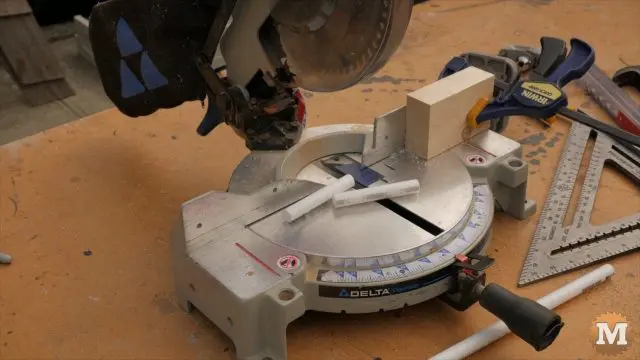
Now I reassembled the forms with the pipes on the dowel pins. I add some latex calking to make the forms water tight and to add a small fillet in the corners. This takes only a few minutes per form. This also fills any small gaps where the sides, ends, and base meet.
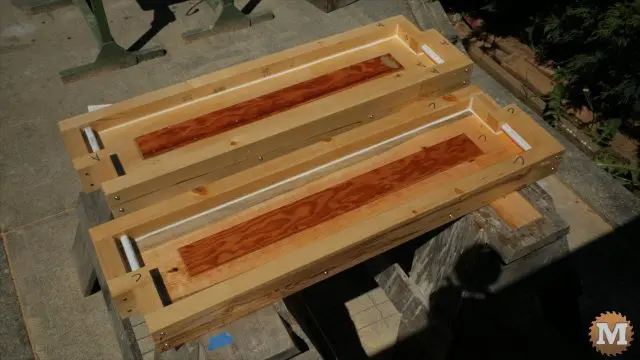
Latex works well as it’s not overly strong and will allow you to disassemble the mold easily once the concrete sets up. I don’t use regular silicone for this. I find it too strong and will be difficult to remove later.
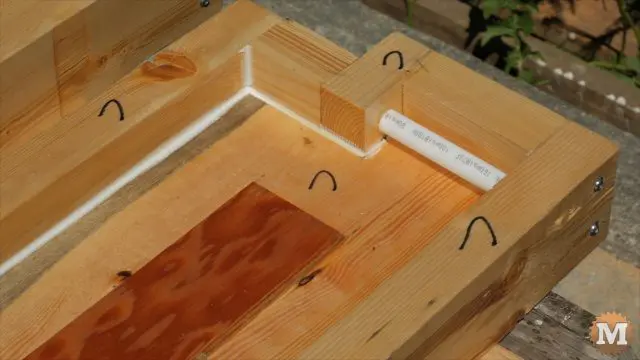
I set the forms over sawhorses and level them in both directions. I cover the pipes with a cloth and spray the form with vegetable non-stick cooking spray.
